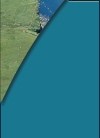Portrays the traumatic period of Irish Culture, which includes famine and emigration.
It offers a professional genealogical service to persons wishing to trace their ancestry.
Open year round.
Dating from the 17th century this is the only example of an Irish longhouse
which is still lived in as a family home. The house is steeped in history
and features works of art, curios and, in the yard, horse drawn farm machinery
and a pets corner.
Open daily (except Sun) June to mid-Sept.
'The Living Past'
 Ireland's original prize-winning centre dedicated to interpreting the
Pre-historic and early Christian eras. Exhibits range from Bronze Age
homesteads to Celtic Chieftain's residences. The "Brendan" boat is located
here. 'The Brendan', a recreation of the type of leather currachs used by St.
Brendan the Navigator in the 6th century.
Ireland's original prize-winning centre dedicated to interpreting the
Pre-historic and early Christian eras. Exhibits range from Bronze Age
homesteads to Celtic Chieftain's residences. The "Brendan" boat is located
here. 'The Brendan', a recreation of the type of leather currachs used by St.
Brendan the Navigator in the 6th century.
Coffee shop
Open daily, Mar. to Oct. and during the weekends of Nov. to Feb.
Museum of local artifacts, an audio visual presentation on the history of Dysert from ancient time.
English and
 German exhibitions, tea room and souvenir shop. A developed trail covering 25 sites of
archeological and historical interest is within a 5 mile radius of the castle. The trail includes
the National Monuments - Dysert O'Dea church with romanesque doorway and 12th Century High Cross.
Guided tours are available if advance notice is given. German exhibitions, tea room and souvenir shop. A developed trail covering 25 sites of
archeological and historical interest is within a 5 mile radius of the castle. The trail includes
the National Monuments - Dysert O'Dea church with romanesque doorway and 12th Century High Cross.
Guided tours are available if advance notice is given.

The Franciscan Friary was founded by The O'Brien kings of Thomond in the 13th
century.
The chancel has very fine tomb carvings dating from the 15th century.
 Fun for all the family. Features include pool, lazy river, crystal tower,
flume, gushers etc.. The Waterworld also has a restaurant, individual and
family changing facilities and children's play facilities. Fun for all the family. Features include pool, lazy river, crystal tower,
flume, gushers etc.. The Waterworld also has a restaurant, individual and
family changing facilities and children's play facilities.
Open Apr. to Oct.
"Kilrush in Landlord Times" depicts the story of Kilrush from its
establishment as an Estate Town by the Vandeleur Landlords at the end of the
18th Century. Starting point of a heritage walk through the streets of Kilrush.
Open daily, Jun. to Sept.

Situated at the National Institute of Higher Education complex at Plassy.
This is a collection of over 2,000 original works of art and antiquity,
personally collected by John and Gertrude Hunt.
Regal Killaloe, once the capital of Ireland as the 11th century seat of heroic King Brian Boru is at
the south-west tip of Lough Derg. The heritage centre comprises a tourist information office, crafts
centre and an exhibition tracing the history of Killaloe from the 10th century to the present day
including it's strong nautical links with Lough Derg, the largest of the River Shannon Lakes.
Previous Next Next
|


 Ireland's original prize-winning centre dedicated to interpreting the
Pre-historic and early Christian eras. Exhibits range from Bronze Age
homesteads to Celtic Chieftain's residences. The "Brendan" boat is located
here. 'The Brendan', a recreation of the type of leather currachs used by St.
Brendan the Navigator in the 6th century.
Ireland's original prize-winning centre dedicated to interpreting the
Pre-historic and early Christian eras. Exhibits range from Bronze Age
homesteads to Celtic Chieftain's residences. The "Brendan" boat is located
here. 'The Brendan', a recreation of the type of leather currachs used by St.
Brendan the Navigator in the 6th century. German exhibitions, tea room and souvenir shop. A developed trail covering 25 sites of
archeological and historical interest is within a 5 mile radius of the castle. The trail includes
the National Monuments - Dysert O'Dea church with romanesque doorway and 12th Century High Cross.
Guided tours are available if advance notice is given.
German exhibitions, tea room and souvenir shop. A developed trail covering 25 sites of
archeological and historical interest is within a 5 mile radius of the castle. The trail includes
the National Monuments - Dysert O'Dea church with romanesque doorway and 12th Century High Cross.
Guided tours are available if advance notice is given.

 Fun for all the family. Features include pool, lazy river, crystal tower,
flume, gushers etc.. The Waterworld also has a restaurant, individual and
family changing facilities and children's play facilities.
Fun for all the family. Features include pool, lazy river, crystal tower,
flume, gushers etc.. The Waterworld also has a restaurant, individual and
family changing facilities and children's play facilities.